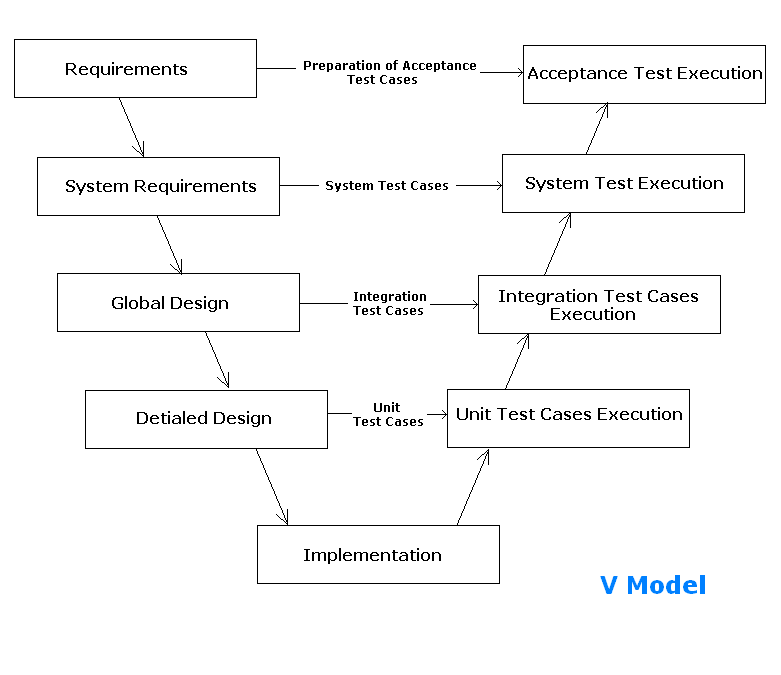DIFFERENT TYPES OF SOFTWARE DEVELOPMENT LIFE CYCLE MODELS:
Waterfall Model
Spiral Model
V Model
Iterative Model
Waterfall Model: This model includes Requirements, Design, Implementation, Verification and Maintenance phase.

Waterfall model is the earliest SDLC approach that was used for software development. The waterfall Model illustrates the software development process in a linear sequential flow, hence it is also referred to as a linear-sequential life cycle model. This
means that any phase in the development process begins only if the previous phase is complete. In waterfall model phases do not overlap. The previous phase acts as input to the next phase.
-All the phases are completed at one time
-It has a rigid structure which is easy to use and each phase has review process.
-Good for small projects
Disadvantages:
-Future adjustments in the project are not possible.
-No prototypes are produced
-Not suitable for projects with moderate requirements, long projects, and for the projects which may undergo future changes.
Spiral Model: The spiral model has four phases. A software project repeatedly passes through these phases in iterations called Spirals.
The four phases are as follows:
1. Identification2. Design
3. Development
4. Testing and Risk Analysis
Identification: This phase starts with gathering the business requirements. In the subsequent spirals as the product progresses, identification of system requirements, subsystem requirements and unit requirements are all done.
This includes understanding the system requirements by continuous communication between the customer and the system analyst.
Design: This phase starts with the conceptual design in the baseline and involves architectural design, logical design of modules, physical product design and final design in the subsequent spirals.
Development: This phase refers to production of the actual software product at every spiral. In the baseline spiral when the product is just thought of and the design is being
developed a POC (Proof of Concept) is developed in this phase to get customer feedback.
Then in the subsequent spirals with higher clarity on requirements and design details a working model of the software called 'build' is produced with a version number.
Testing and Risk Analysis: This phase includes identifying, estimating, and monitoring technical feasibility and management risks, such as schedule slippage and cost overrun. After testing the build, at the end of first iteration, the customer evaluates the software and provides
feedback.
Based on the customer feedback, software development process enters into the next iteration and subsequently follows the linear approach to implement the feedback suggested by the customer. The process of iterations along the spiral continues throughout the life of the software.
Advantages:
-Importance is placed more on risk analysis
-Software is produced in the early stage.
-Changing requirements can be accommodated
-Development can be divided into smaller parts and more risky parts can be developed earlier which helps better risk management
Disadvantages:
-Not suitable for small projects
-It is very costly
-Management is complex
-Spiral may go indefinitely
V-Model:

To overcome the disadvantages of waterfall method, V-model was introduced. This model ensures that the testing is done in each and every phase of the software development in parallel to the development.
This model is also termed as Verification and Validation Model.
Advantages:
-Simple and easy to follow.
-Testing activities like planning, designing of test cases happen well before coding. This results in saving of time.
-Defects are found in early stages.
-Works well for small projects where the requirements are easily understood.
Disadvantages:
-Not very flexible, is very rigid
Iterative Model:

Study the picture for Iterative model. You can see all the phases of SDLC. This model, does not require complete set of requirements to start off with.
The basic idea of this model is to develop smaller portions of the software in repeated cycles(Iterative).

No comments:
Post a Comment